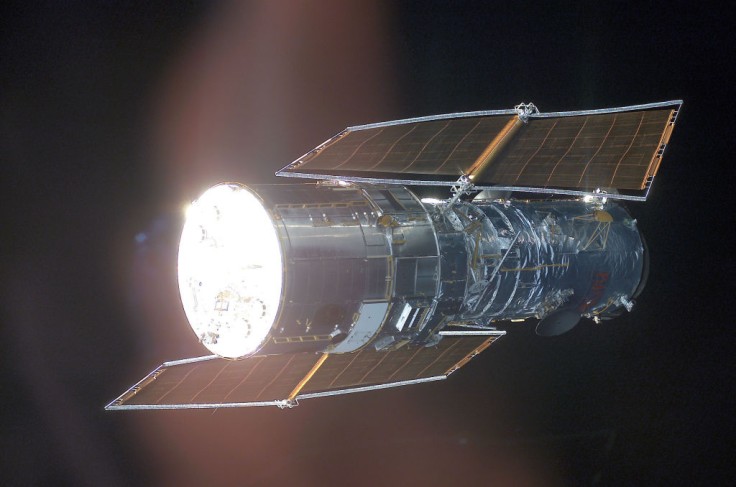
NASA's Hubble telescope captured a stunning image of a faraway galaxy with the help of nature. Find out how the first space-based optical telescope was able to take a snapshot of the astronomical phenomenon.
NASA Hubble and the Cosmic Lens
NASA released an image on Twitter showing gravitational lensing in action.
Gravitational lensing is a "striking astronomical phenomenon." What it does is it can warp, magnify and even duplicate the appearance of distant galaxies, making the image look like a kaleidoscope of the vastness of space.
The phenomenon occurs when light from a distant galaxy is subtly distorted by the gravitational pull of an intervening astronomical object, NASA explained. In the photo taken, what provided the gravitational pull was a relatively nearby galaxy cluster. The cluster lensed a significantly more distant inactive galaxy which NASA regards as a slumbering giant that has run out of gas required to form new stars and is located some 10 billion lightyears away.
Take a look through this cosmic lens 🔎
— Hubble (@NASAHubble) July 23, 2021
Gravitational lensing is like nature’s magnifying glass. It can warp or magnify the appearance of distant galaxies, seen as arcs of light in this #HubbleFriday image!
Learn about this astronomical phenomenon here: https://t.co/N4xE3eDG9R pic.twitter.com/9NlQMZSsIc
The final image was made by using observations from eight different infrared filters. These filters were spread across two of Hubble's cameras: the Advanced Camera for Surveys and the Wide Field Camera 3. These are Hubble's most advanced astronomical instruments fitted by astronauts during the final two servicing missions to Hubble.
The Hubble Space Telescope transmits the data back to Earth. This digitized information needs to be converted first by computers into black-and-white photos. From there, they are enhanced to discern details in the images. Color is brought back to the images through colored filters. This isolates different colors in each image providing color to the images that are as natural as possible.
Most of the images captured by Hubble are released to the public six months after scientists and investigators have done their research.
The cameras provide astronomers with incredibly detailed observations across a large area of the sky and a wide range of wavelengths, NASA added.
Gravitational lensing can be applied by astronomers as a natural magnifying glass, aiding them in inspecting objects like distant dormant galaxies which would usually be too difficult for telescopes like Hubble to resolve.
Hubble's back! 🎉
— Hubble (@NASAHubble) July 19, 2021
After the Hubble team successfully turned on backup hardware aboard the telescope, the observatory got back to work over the weekend and took these galaxy snapshots.
Find out more here: https://t.co/2mWwSGyIKc pic.twitter.com/Y6tVQWrjig
Read also: NASA Hubble Telescope Pictures and Videos: New Galaxy Snapshots Taken After Scary Glitch!
NASA Hubble Space Telescope Fixed
Normal science observations began again on July 17 after Hubble experienced a major computer glitch. The telescope has been in service for over 30 years since it was deployed on April 25, 1990.
The space telescope was out of service for over a month before it was able to start back up.
The Hubble team was able to switch to the backup hardware aboard the telescope and was able to continue performing observations and perform other work over the weekend.
Two Images it was able to capture after its return to operations were a pair of peculiar galaxies. The images were able to help scientists view the ongoing interaction between the galaxies.
While Hubble does not have a "real time" camera or webcam on board to allow regular people on Earth to observe what the telescope is observing at the same time, Space Telescope Live does tell you what the Hubble is looking at any time. The images you will be able to see are from other telescopes but it should give you an idea of where Hubble is looking, NASA explained.








